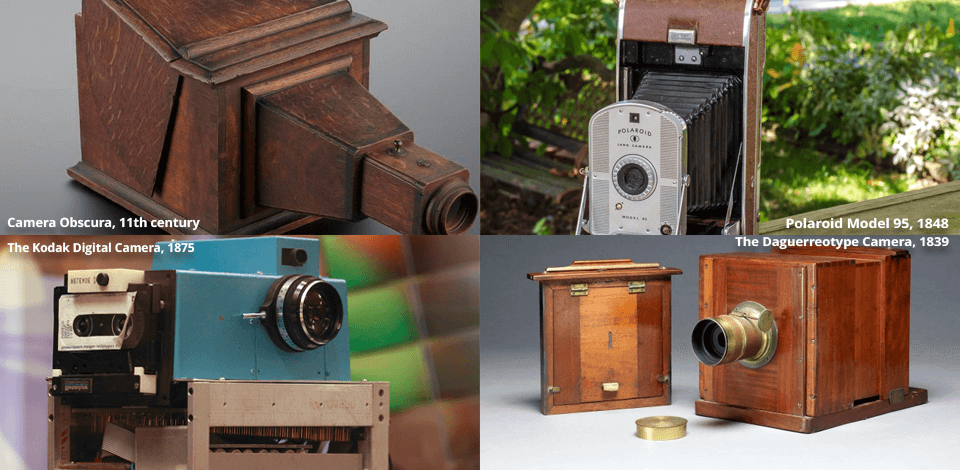
The first cameras were invented approximately in the 5th century BC when Mozi who was a philosopher of Chinese origin introduced the concept of camera obscura.
This primitive device laid the foundation for the development of a photographic camera and the variety of shooting equipment we use nowadays.
This process involved the first attempts to project the inverted pics to important inventions made by pioneers like Niépce and Daguerre that startled the world in the 19th century.
5th century BC: Mozi introduced the concept of camera obscura forming the basis of the development of modern photography.
1826: Nicéphore Niépce took the first photograph using such photosensitive agent as bitumen, so it was permanent.
1839: William Henry Fox Talbot invented photogenic drawings created with silver salts, which is one of the first imaging techniques.
1851-1854: The ambrotype photographic process was invented and the wet plate collodion technique became dominant during these years.
1861: James Clerk Maxwell showed the first color photographic image.
1873: John Wesley Hyatt developed celluloid, an important material for camera film, which became a trademark.
1878: Charles Bennett upgraded gelatin dry plate photography.
1887: Reverend Hannibal Goodwin invented the method of creating flexible, transparent film and applied it to the patent.
1888: Eastman presented the Kodak camera bringing photography closer to the public.
1895: Wilhelm Roentgen presented X-ray photography.
1922: Grand opening of the Eastman Theater that presented photographic achievements.
1924: Sending images by wire became possible thanks to AT&T.
1930: Introduction of high-quality photoflash bulbs.
1931: Harold Edgerton developed strobes and used them to freeze objects in motion.
1935: Kodachrome color photography was introduced by film giant Eastman Kodak.
1937: The xerographic process (photocopying) was invented by Chester Carlson.
1954: Tri-X film by Kodak appeared.
1960: The US Navy started to use a new underwater camera.
1963: Introduction of Polacolor film that enabled the cameras to produce color pictures.
1968: Iconic Earthrise image captured from the moon. Earthrise image of Earth taken by humans from the Moon.
1973: The invention of the SX-70 instant camera by Polaroid.
1977: George Eastman and Edwin Land were accepted to the National Inventors Hall of Fame.
1978: Konica presented a point-and-shoot AF camera.
1980: The first consumer camcorder was unveiled by Sony.
1984: The earliest digital still camera created by Canon.
1985: Pixar invented the digital imaging processor.
1990: Photo Compact Disc was introduced by Kodak.
2000s: Digital cameras, compact models, and smartphone photography were presented to the public.
2010s: Breakthroughs in smartphone cameras, mirrorless systems, and drone photography.
2022s: Highly sophisticated camera models have been invented that use AI technology to upgrade image processing, identify scenes, and tweak settings automatically to get top-level results. Artificial intelligence revolutionized modern photography, making it closer to the average person. It refines focus, and exposure and allows jazzing up pics with original effects.
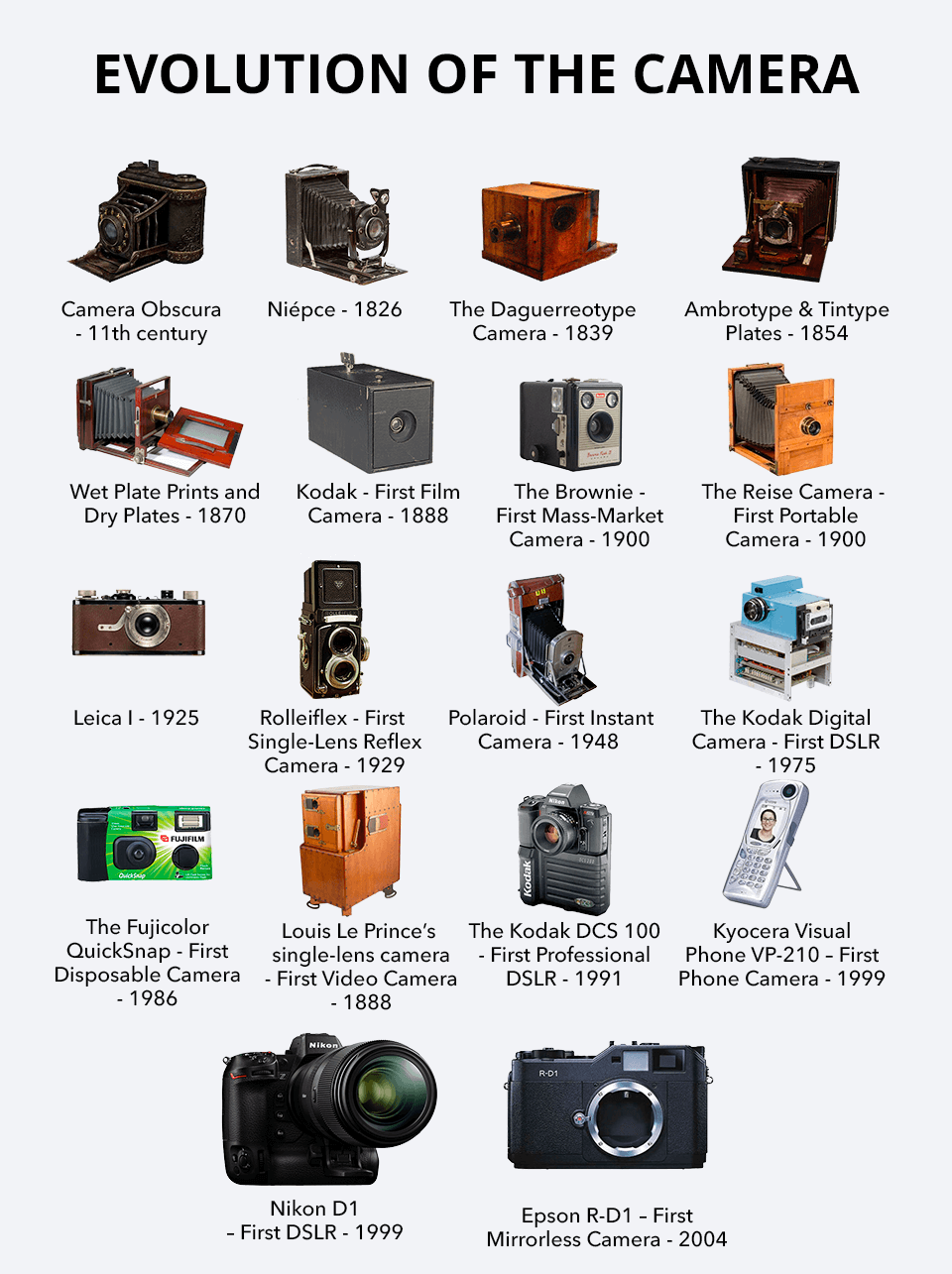
Multiple camera models influenced the development of a camera history. Not just because these devices introduced fresh features or amazing technological advances, but they altered dramatically the relationship of people to photography and highlighted the importance of photography in various fields of our lives.
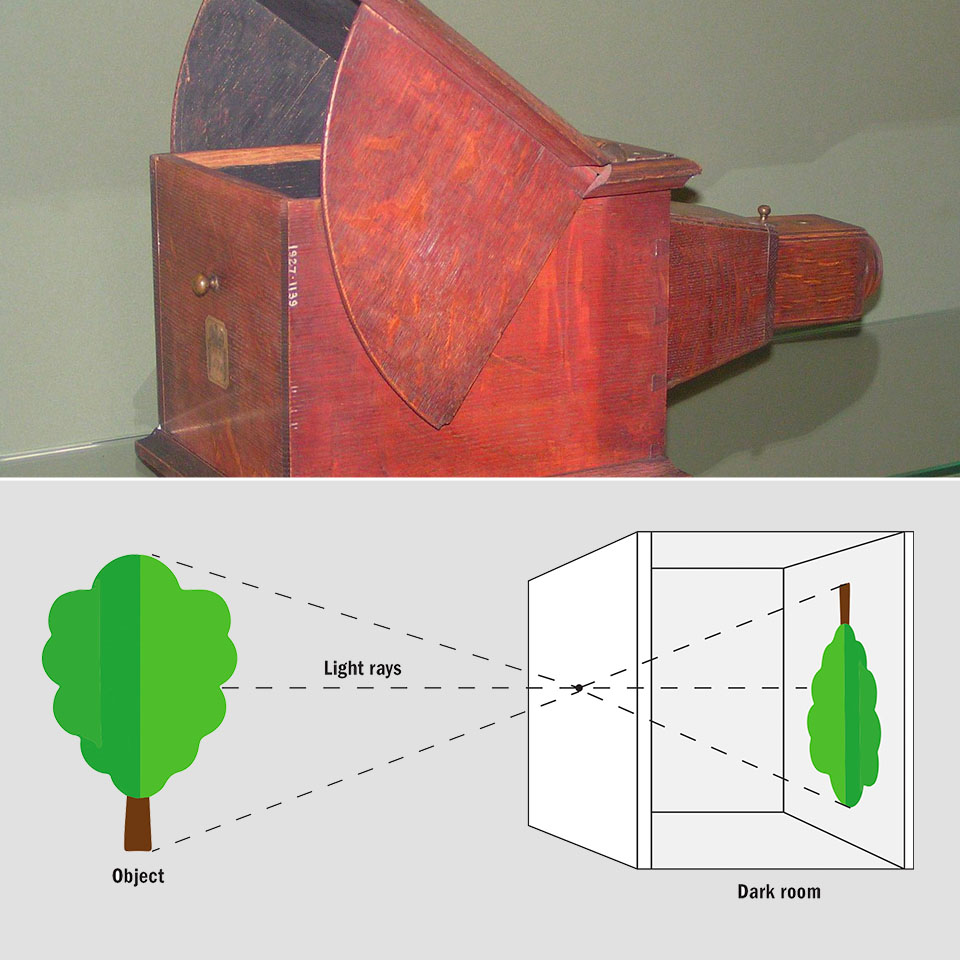
Time period: 11th century
Referred to as the first pinhole camera, such a construction didn’t actually take photos, but projected them onto different surfaces.
It happened that people traced projected photos so as not to lose them forever once a system was turned off.
At the beginning of the photography era, the camera obscura was used for observing solar eclipses. During the Renaissance epoch, different artists, including Leonardo Da Vinci, used their light projections to sketch and create a sense of depth in artworks.
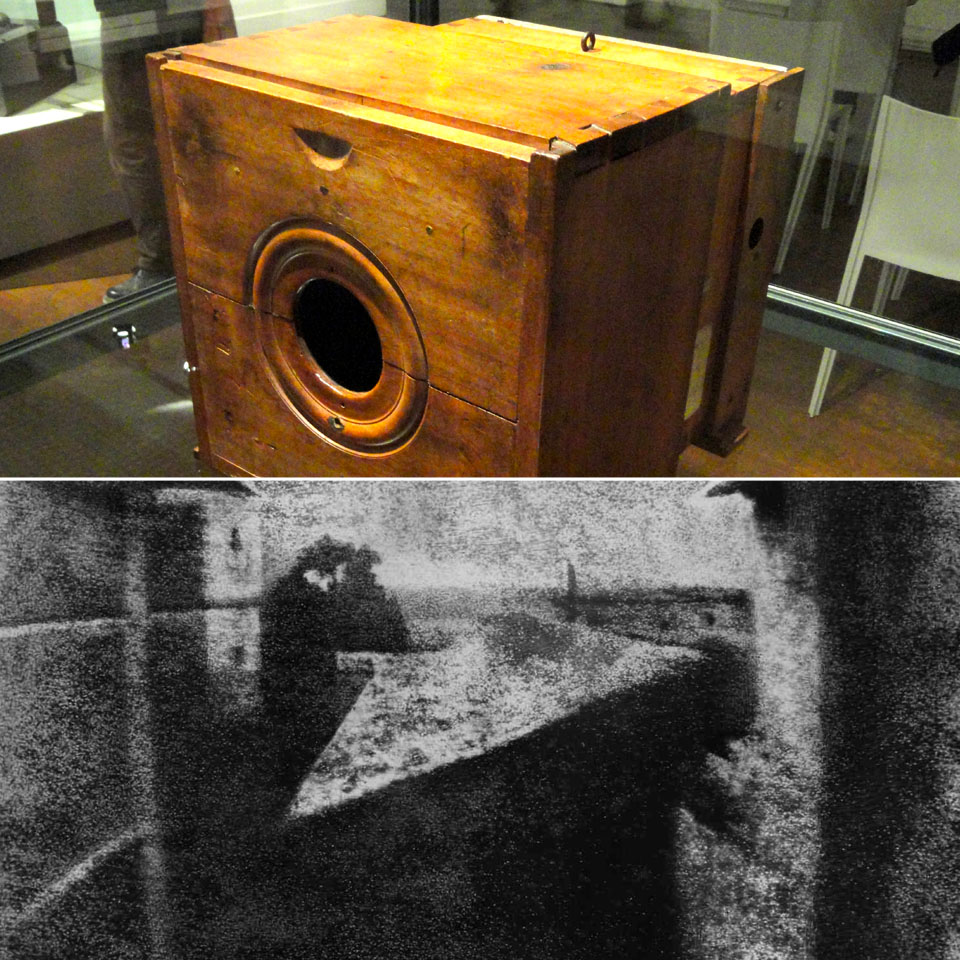
Time period: 1826
Nicéphore Niépce, a French inventor, managed to modify the camera obscura in 1826. The first photo he made was called View from the Window at Le Gras.
The inventor focused the camera obscura on a 6.4x8.0-inch pewter plate coated with asphalt and received the first image.
The asphalt hardened in the brightly lit areas but could still be easily washed away in the darkened areas. This process is known as heliography as it involves exposing light to create those rare photos.
Since the invention of camera, such innovation was a real breakthrough but Niépce had to put up with some limitations.
First of all, he had to spend about 8 hours to fully expose a photo. Besides, capturing a long-lasting photo required performing many chemical, complex processes, and if a photographer failed to do everything correctly, a picture was lost.
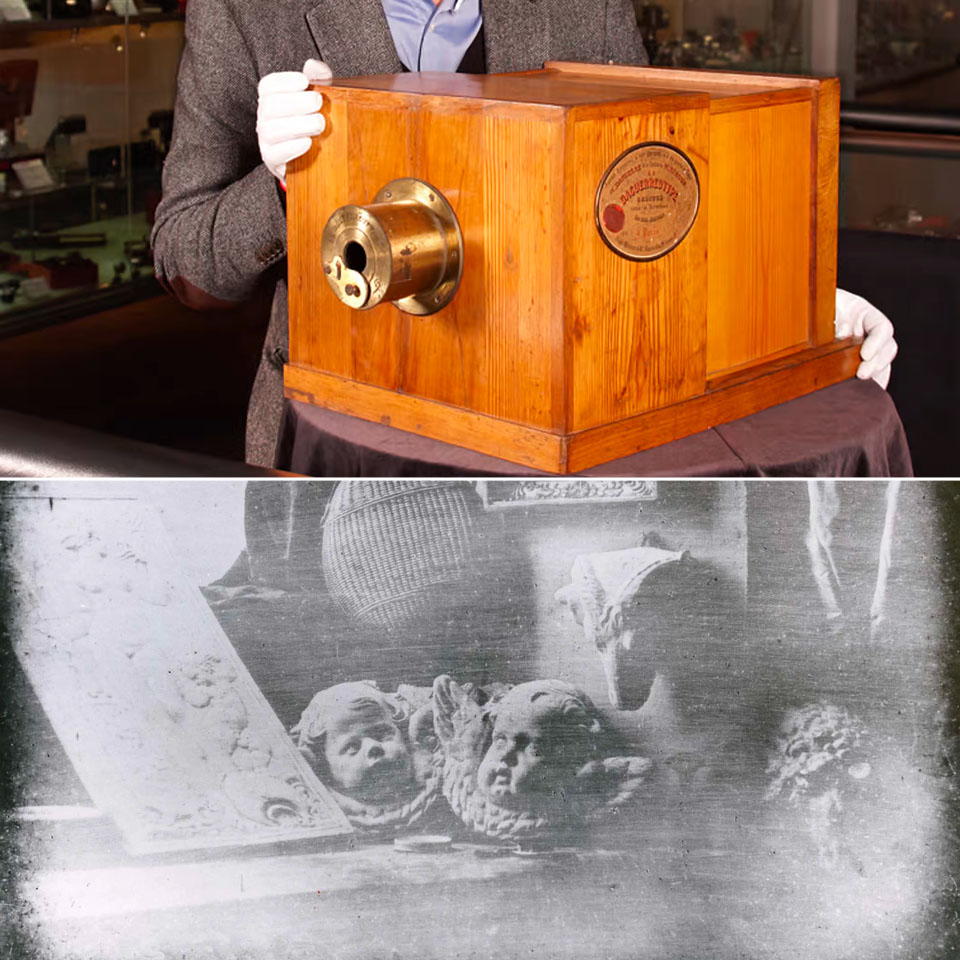
Time period: 1839
The Daguerreotype Camera, predecessor of modern film, created by Louis Daguerre is one of the world’s most expensive cameras.
He decided to attach (“fix”) images onto sheets of silver-plated copper that could be coated in iodine for better light sensitivity.
After a short exposure and immersing a piece of copper in silver chloride, a lasting image appeared.
This was rather fast and the quality of the result was satisfactory, so the technique became popular worldwide.
However, only wealthy people could afford to purchase their portraits produced with the help of daguerreotype cameras. The price was too high for the working class.
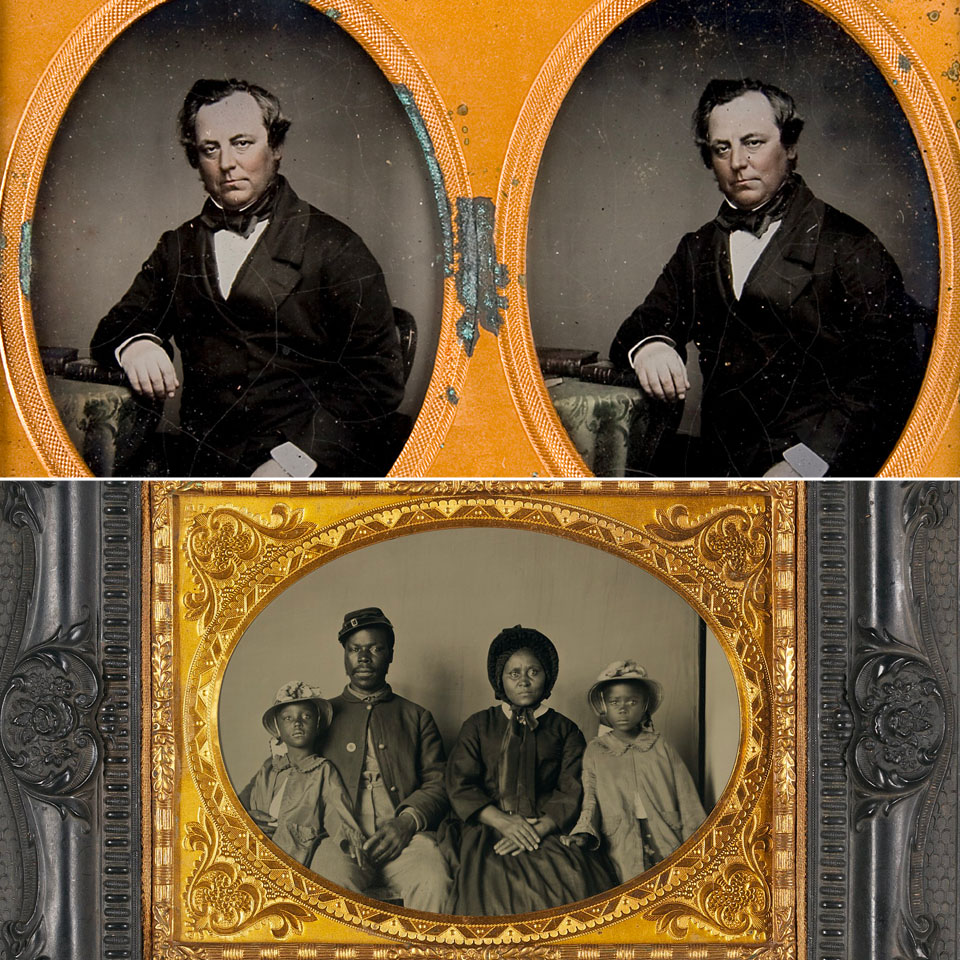
Time period: 1854
Ambrotypes is a type of photography technique that produces an image on a sheet of glass, unlike daguerreotype, which uses copper plate.
During the tintype photographic process, the image was produced on a tin plate. This type of plate was extremely light-sensitive, so the development should be very quick.
Both ambrotypes and tintype photography processes used cameras consisting of a pair of nested boxes.
The back part of the box featured a detachable glass screen, and easily adjusted the focus by sliding in/out.
When the focus was adjusted, a photographer had to replace the ground glass with a lightproof holder with a sensitized plate or paper inside. Then the lens was covered with a cap.
After opening the front cover of the holder, the photographer removed the cap from the lens noted the time needed for the existing lighting conditions and then replaced the cap and closed the holder.

Time period: 1870
Although dry plates appeared in 1857 thanks to Désiré van Monckhoven but the wet plate process was used to produce quality pics at a high speed only after the invention of the gelatin dry plate in 1871 by Richard Leach Maddox.
In 1878 it was discovered that heated gelatin emulsion is more sensitive, which allows to make what is known as 'instantaneous photography' more practical.
From that time, a photographer did not necessarily need to install a camera on a tripod or other support to shoot those Victorian era photos.
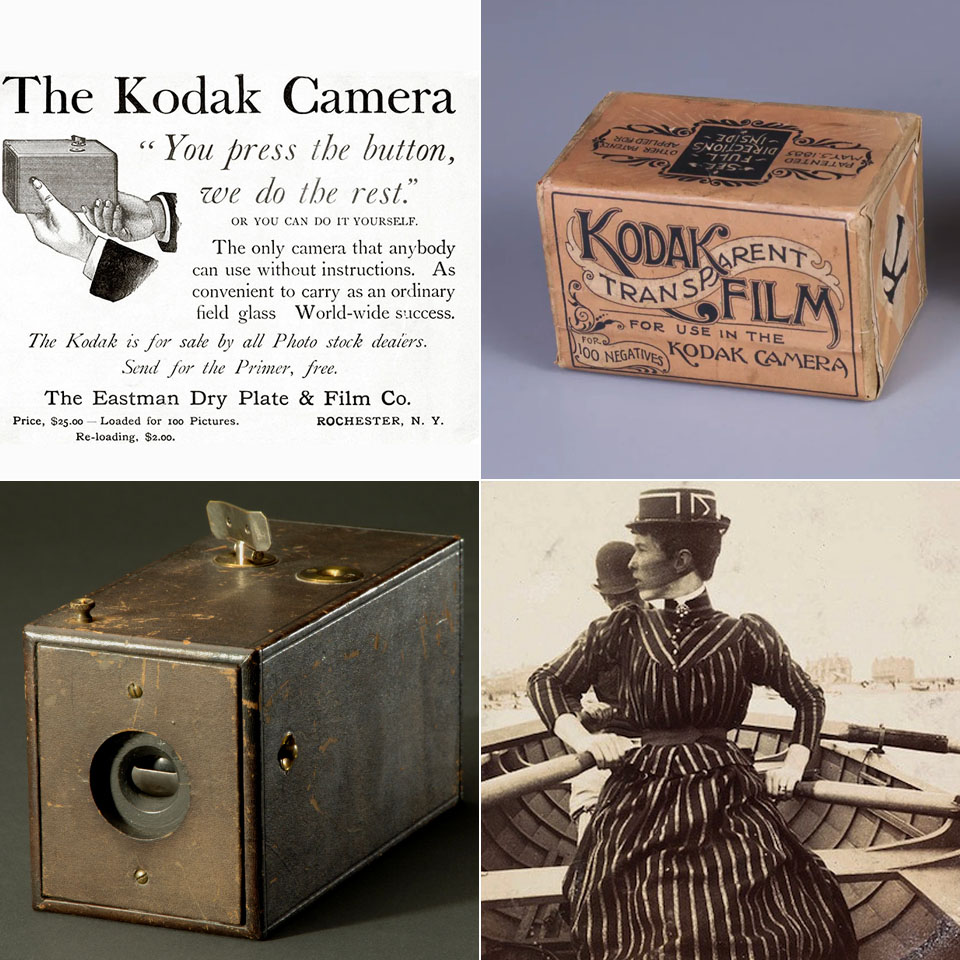
Time period: 1888
The new stage in the history of cameras is dedicated to the invention of photographic film by George Eastman.
He began to produce a paper film in 1885 and then switched to celluloid 4 years later.
That camera was rather simple, resembling a regular box. It had a fixed-focus lens and single shutter speed.
Eastman sold it for $25, so even people from the middle class could afford to buy it.
The camera was pre-loaded with a film long enough for taking 100 exposures and when the roll was finished, an owner had to send it back to the factory for processing and reloading.
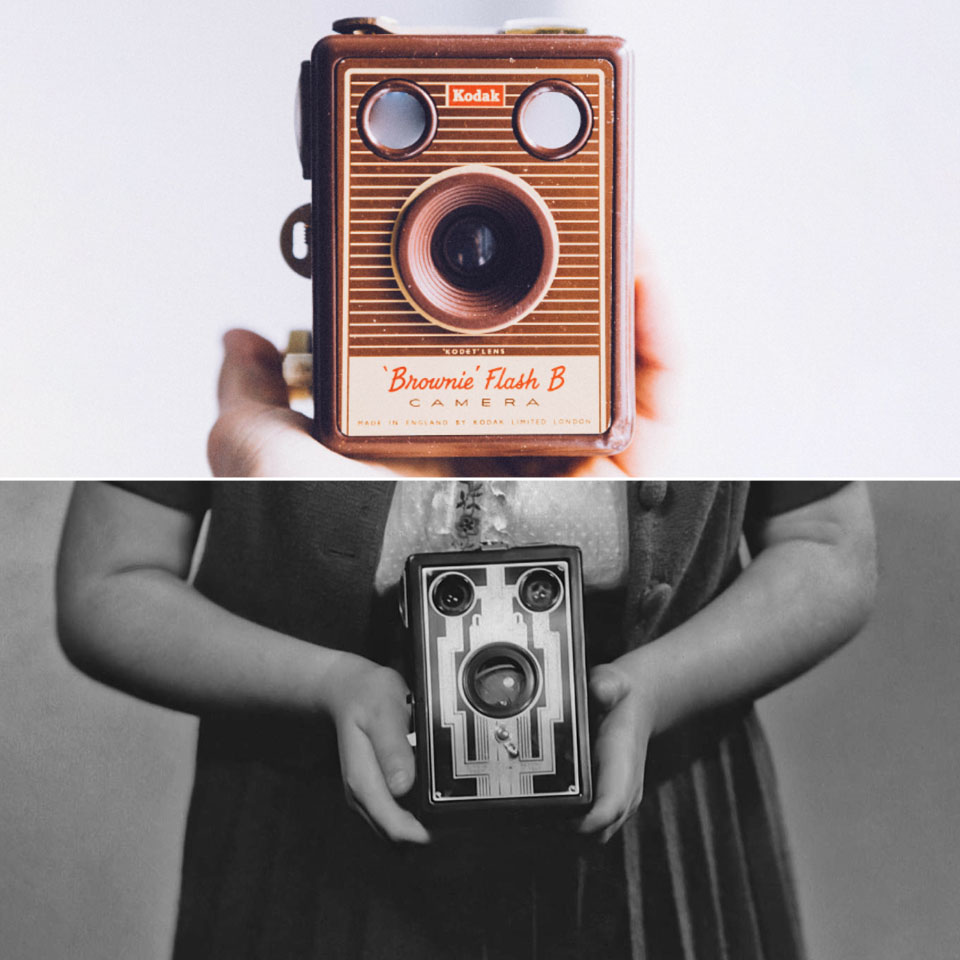
Time period: 1900
1900 is another landmark in the camera history with Eastman taking mass-market photography one step further.
He introduced the Brownie, a simple and budget-friendly box camera, which was designed for taking snapshots.
It cost 1 dollar and became a go-to shooting device for any person striving to save important moments for the next generations or even take the most iconic photos.
The Eastman Kodak Company touted the Brownie as a great camera for children.
Actually, in the first year after its introduction on the market, the manufacturer sold over a quarter of a million such small cameras.
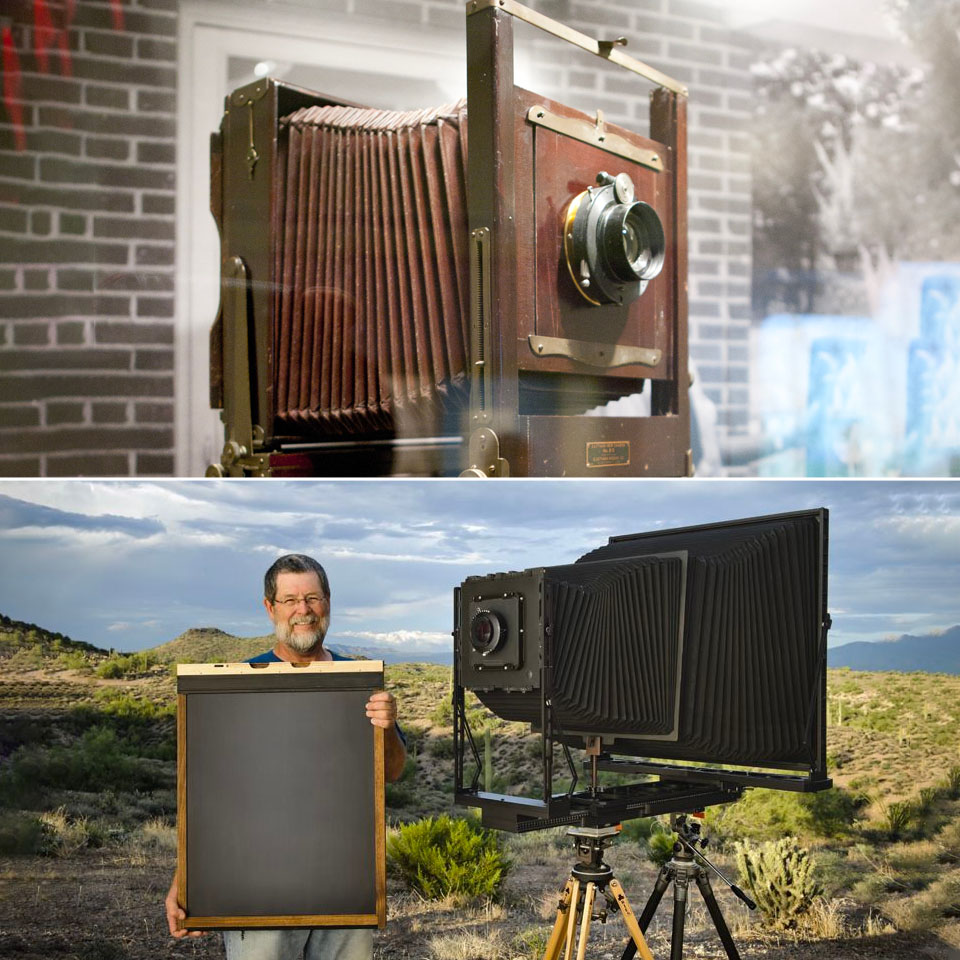
Time period: 1900
In the 1900s all cameras had one thing in common – they were bulky and heavy.
That was a huge problem for many photographers, so they were very pleased when the first travel camera was invented. It was the world’s first really portable camera, known as Reise Camera.
In addition to a space-saving design, it could also be folded even into a smaller unit. So, traveling photographers who wanted to capture the beauty and people in the most far-flung areas were delighted with such an invention.
Frankly speaking, that was the most demanded travel camera among photographers.
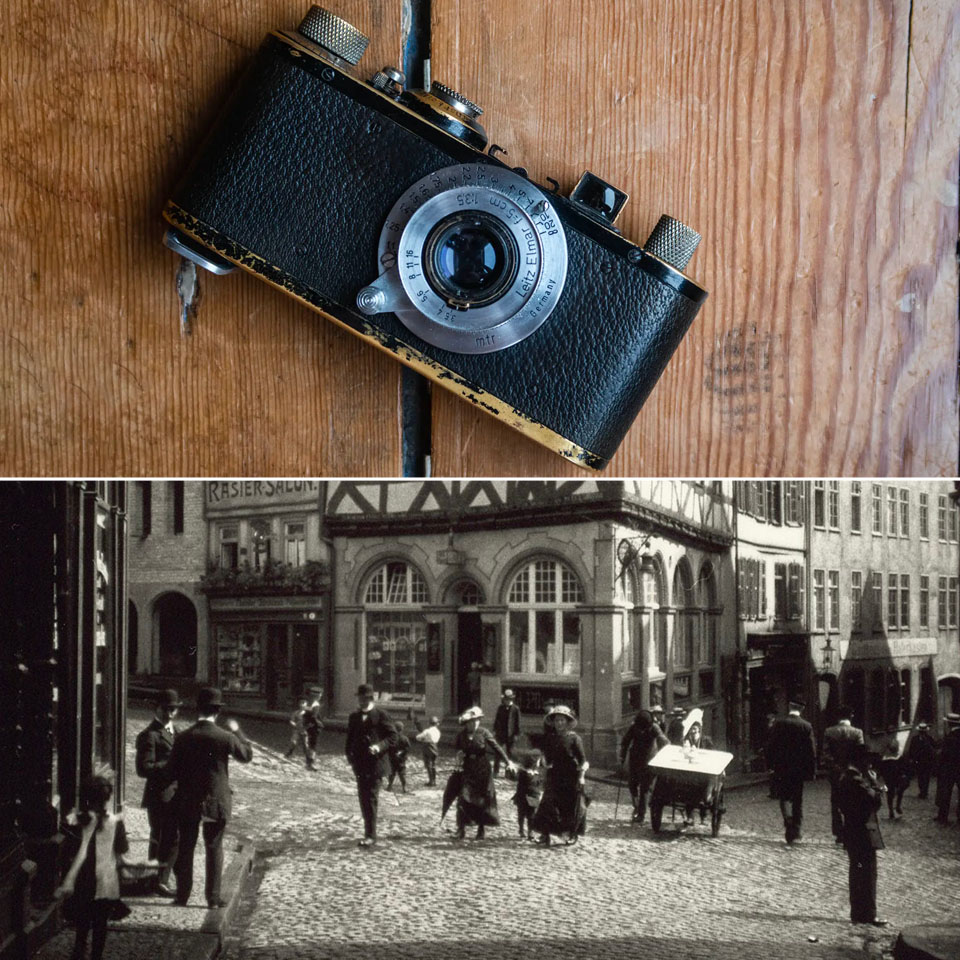
Time period: 1925
The most famed representative of 35mm cameras was the Leica I, which appeared on the market in 1925.
Oskar Barnack, a development engineer for Leitz, created compact 35mm cameras in 1913 with the desire to use 35mm film for still photography.
Though it was initially popular in Europe, American photographers also yearned to test its capabilities, so in the 1960s it was available in many stores and gave rise to film photography and magazine photojournalism.

Time period: 1929
The German firm Franke & Heidecke created Rolleiflex, a twin-lens reflex roll-film camera.
The camera featured 2 lenses with identical focal lengths.
The first lens was responsible for transmitting an image to the film, while the second one worked as a viewfinder and an element of a focusing mechanism.
It was possible to make 12 exposures, 6 cm square each, on a roll of 120-size film. Both amateur and famous photographers like the camera for its long-lasting design, compact size, and precision.
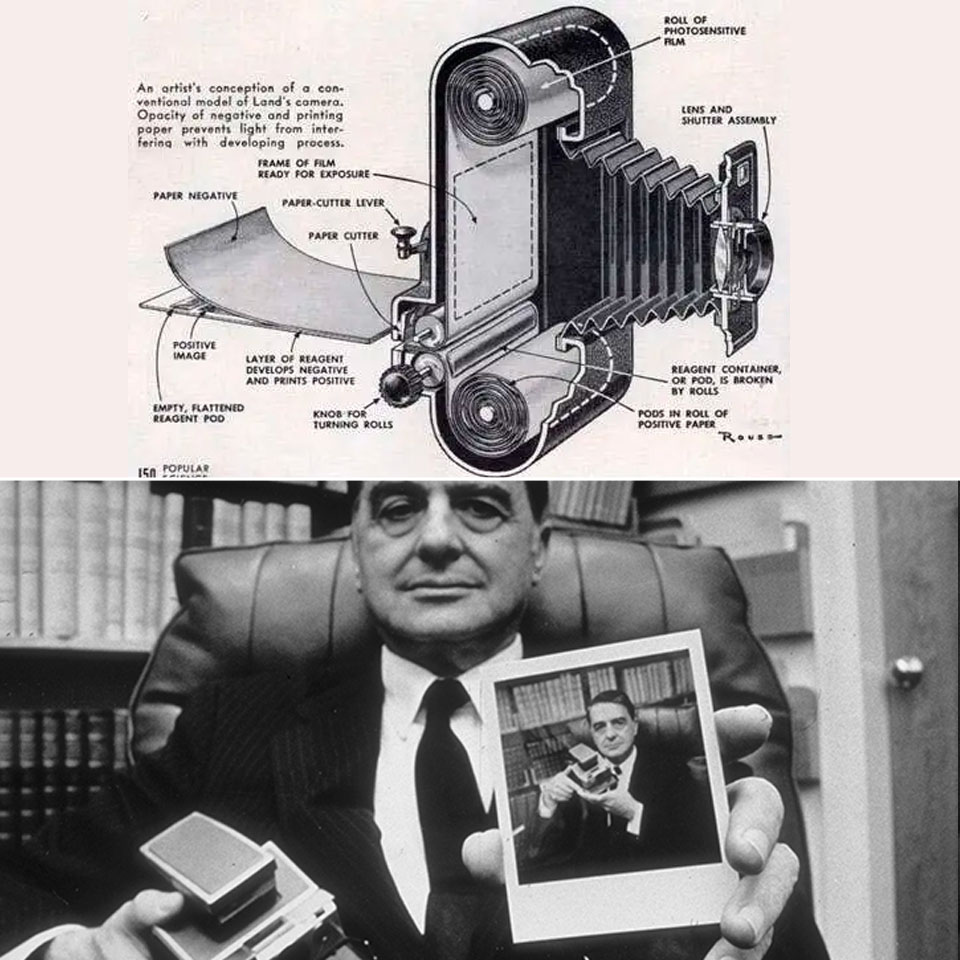
Time period: 1948
A regular holiday in Edwin Land’s family started another significant era in camera history.
Land was together with his wife and daughter, and just after he had taken several shots, his daughter got curious why she couldn’t instantly see them.
That was a really thought-provoking question that made Land ponder on creating instant cameras.
5 years later such cameras were available in stores and people were amazed by the possibility of taking images and develop film for themselves.
It was called Polaroid Model 95. Another name was the Land Camera, with reference to the inventor. Any person could snap a shot and get a ready photo in less than a minute thanks to a secret chemical film development process happening inside the camera.
Of course, the price was high above average but the advantages the camera offered were appreciated by many people.
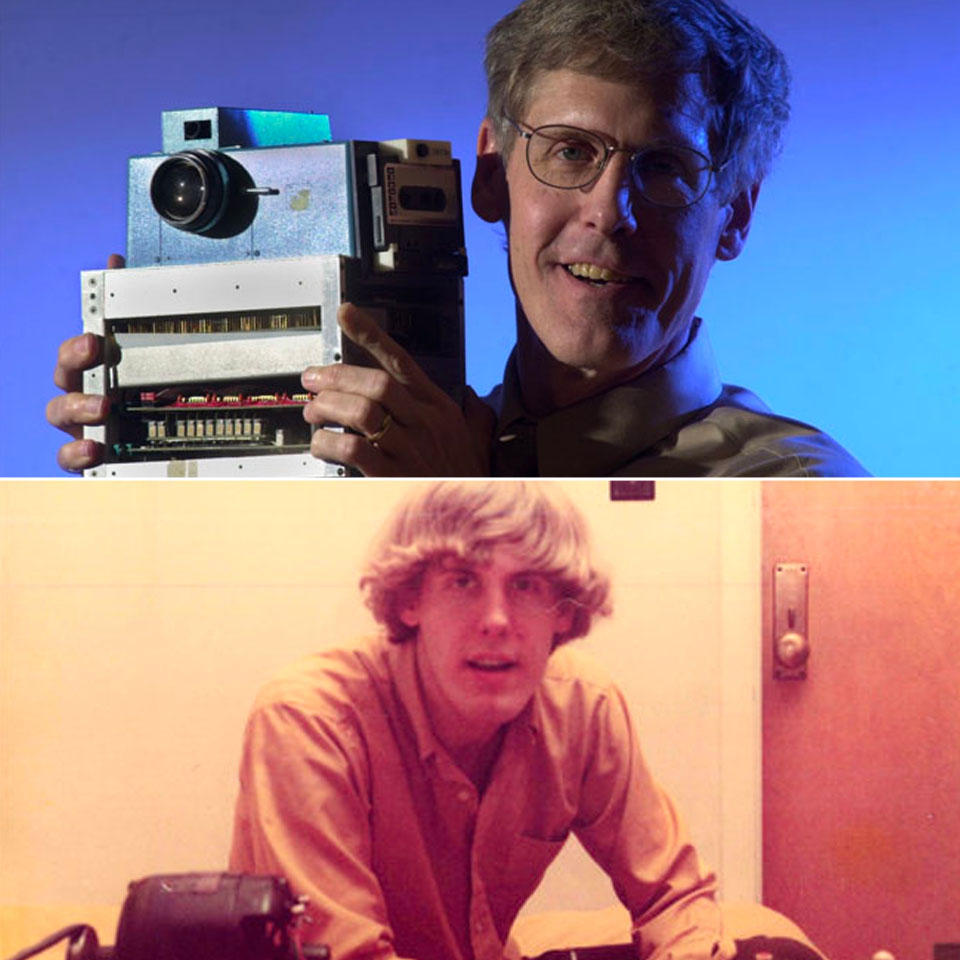
Time period: 1975
In 1975, Steve Sasson, a young engineer from the Kodak Company, created the first DSLR camera, using Motorola parts, several sensors, 16 nickel-cadmium batteries, a tape recorder and the lens from a Kodak movie camera.
It weighed 8 pounds and became a real finding for black and white photography enthusiasts.
All files were recorded on a cassette and photographers could look through images on a TV screen.
In 1976 the US military figured out that digital cameras can be used for satellite technology and that practical application turned out to be extremely successful. Later, cameras were picked by scientists and the media for broadcasting events.
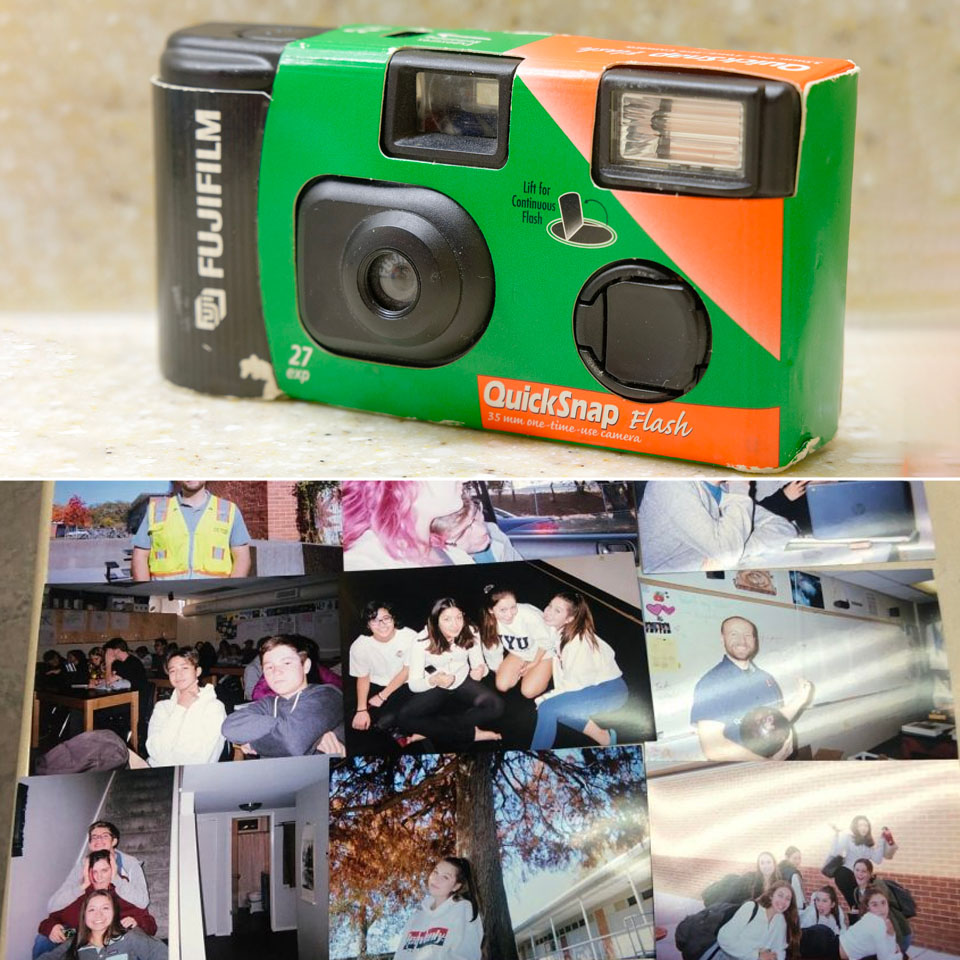
Time period: 1986
The Fujicolor QuickSnap disposable camera was an easy-to-use box camera with a roll of film.
It initially was intended for one-time usage. It has no viewfinder, featuring just a hole to look through.
This particular model came with an embedded flash, so photographers could work not only during the day but also at night.
The camera was in high demand among people mainly due to its straightforward operation.
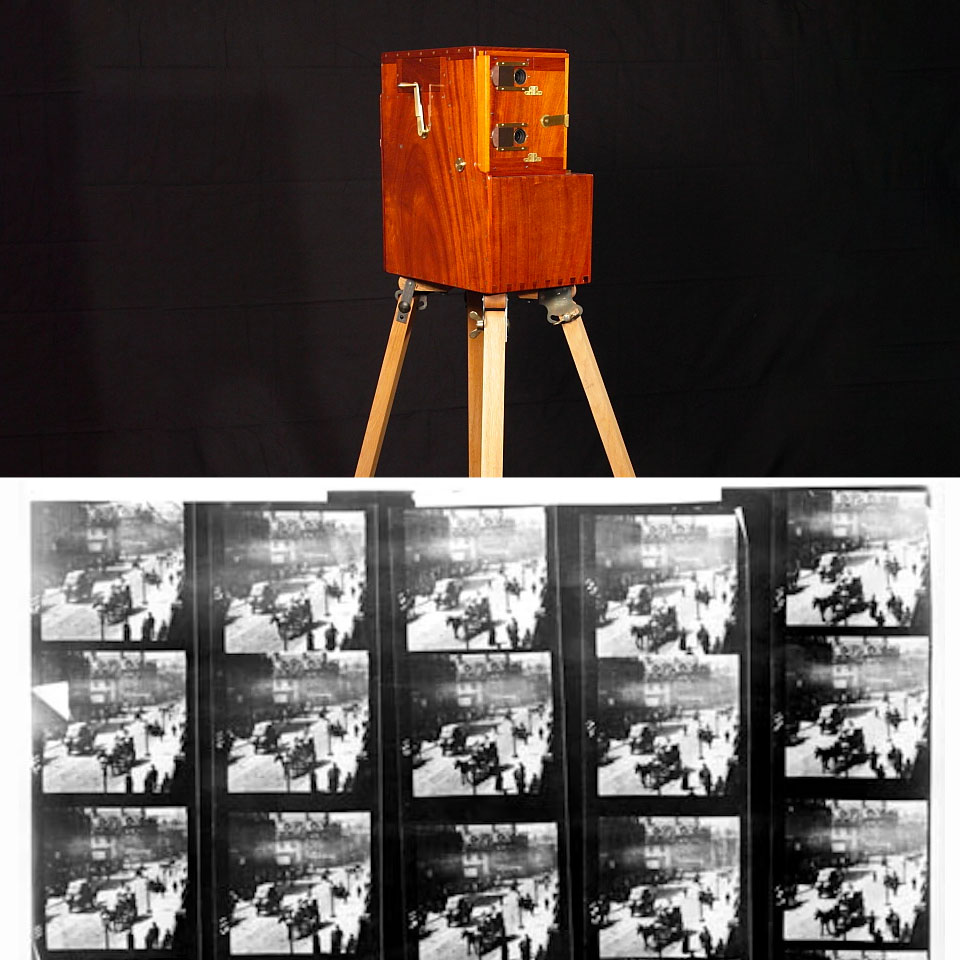
Time period: 1888
In 1878 Eadweard Muybridge needed twenty-four still cameras to shoot running horses, but almost after a decade (in 1891), W.K.L invented and patented the Kinetograph camera, from which a modern history of motion picture photography started.
In the late 1880s, Dickenson under the direction of Dickenson invented the first motion picture camera in a single body. Afterward, such camera models as Lumiere, Pleograph, Aeroscope, and other movie cameras appeared.
In 1888 Louis Le Prince built a single-lens camera that according to historians shot the first motion video.
Although nowadays it seems so primitive, it was a considerable step forward for motion pictures.
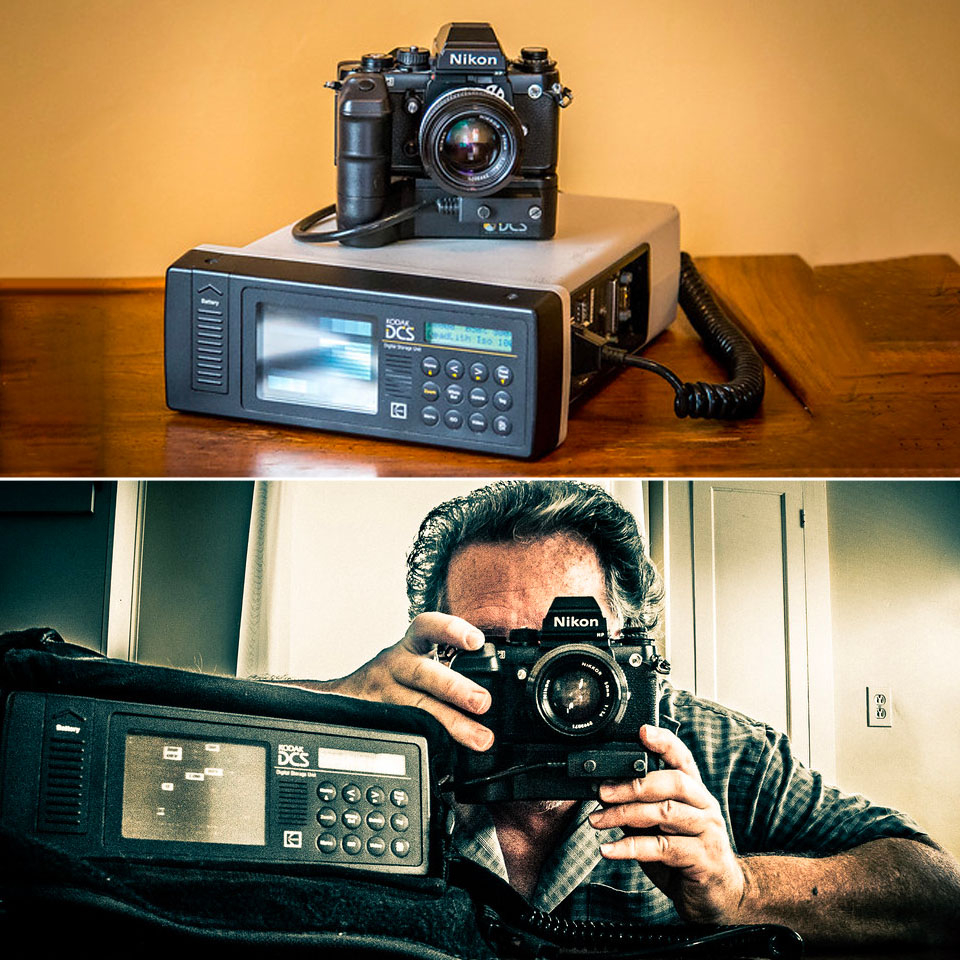
Time period: 1991
By 1991, the photography community had seen the first Kodak digital camera aimed at professionals.
It was called the Kodak DCS 100 and consisted of the back part of a digital camera (color and monochrome versions) and the Nikon F3 SLR body. It had a resolution of 1.3MP and featured a 200MB hard drive large enough for storing 160 uncompressed photos.
It was possible to connect a separate digital storage unit, known as DSU, to a camera using an interconnect cable.
This system was specifically created for photojournalists who needed to transmit images to newsrooms without delays.
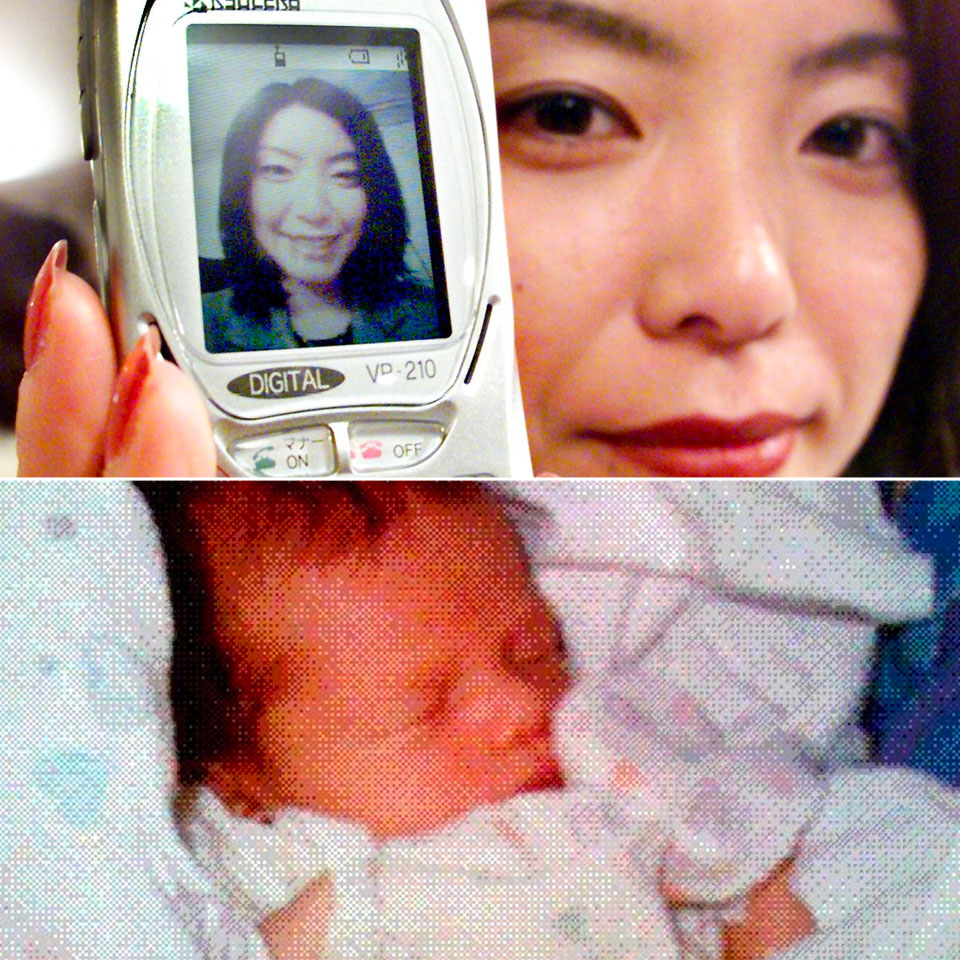
Time period: 1999
The first cellphone with a camera was manufactured by Samsung and released in South Korea. The public got access to such portable devices with embedded cameras, which was a real revolution at that time.
It had storage for 20 JPEG images and users could send them over e-mail or keep them in the phone cloud.
The latter means sending files (up to 2 pictures/second) over Japan's Personal Handy-phone System (PHS) cellular network.
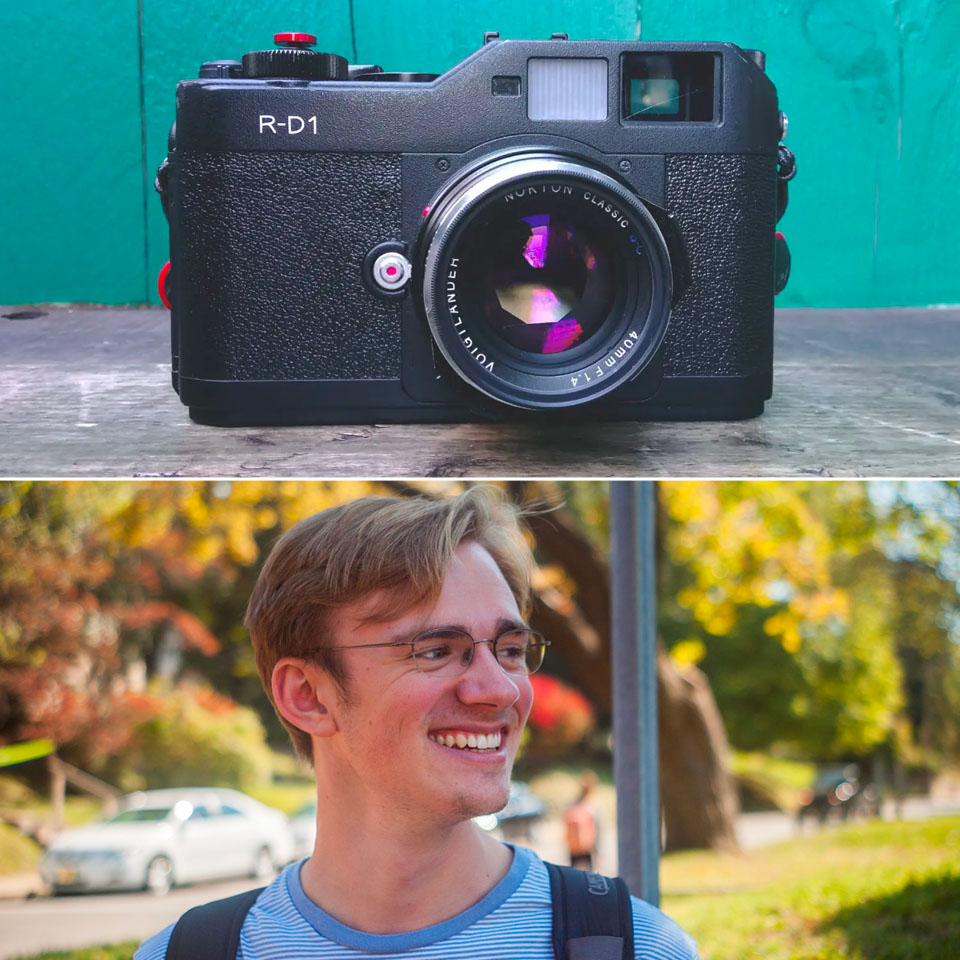
Time period: 2004
Epson, which is one of the most reputable printer producers in the world, is thought to have manufactured the first consumer mirrorless camera.
Before such giants as Canon, Nikon, Panasonic or Sony entered the game, the company introduced the R-D1 digital rangefinder, a mirrorless shooter with a 6.1MP APS-C sensor and interchangeable lenses, 200-1,600 ISO range, 1:1 optical viewfinder, and a 2.5-inch fixed LCD.
The price of R-D1 equipped with Leica M-mount lenses was very high, to be precise $3,000.
Some time passed before pro shooters understood the benefits of mirrorless cameras, but nowadays they do not lose DSLRs in terms of sensor performance, quality of lenses and images, as well as versatility.
When lacking a reflex mirror, they offer better focusing, zebra patterns, face/eye tracking, performance in low light, and live depth of field previews if comparing mirrorless vs DSLR.
The first piece of shooting equipment that was able to snap a pic is known as the heliograph. It was created by Joseph Nicéphore Niépce in 1816. However, the daguerreotype is commonly regarded as the closest to the modern camera. This device was invented by Louis Daguerre in 1839.
This was the camera obscura, which is a dim room with a hole (or lens) in a wall that casts a reverse picture onto the opposite wall outside.
The first ever photo, which is available nowadays, featured a landscape and was shot by Joseph Nicéphore Niépce at Le Gras, France, in 1826. Actually, this is probably not the oldest pic, as Niece had performed many experiments with heliography since 1816, but these photos were not preserved and were not unveiled to the public.
When the Kodak camera was presented by George Eastman in 1888, photography became more common in the world. This camera was user-friendly and made photography art more popular among ordinary people.
Kodak is known as the first camera brand. George Eastman established the company in 1888 and manufactured the first camera that became available to the common public. Using a roll of paper, and celluloid in the future, the Kodak device could capture up to 100 pics. Once the exposures were over, an owner had to send the entire device to Kodak laboratories for development.
This was a photographic process, not the camera that enabled the production of color photography. In 1907, the Autochrome process was invented by Auguste and Louis Lumière to take monochrome brownish images. But real color photography emerged thanks to the invention of Kodak’s Kodachrome film in 1935. The successors of Kodachrome were Agfacolor (1936) by Agfa and Kodacolor (1942) by Kodak.
This is not a single person but rather a group of individuals including Niépce, Daguerre, and Eastman. James Clerk Maxwell introduced color photographic images in 1861, whereas Wilhelm Roentgen is considered a founder of x-ray photography that appeared in 1895.